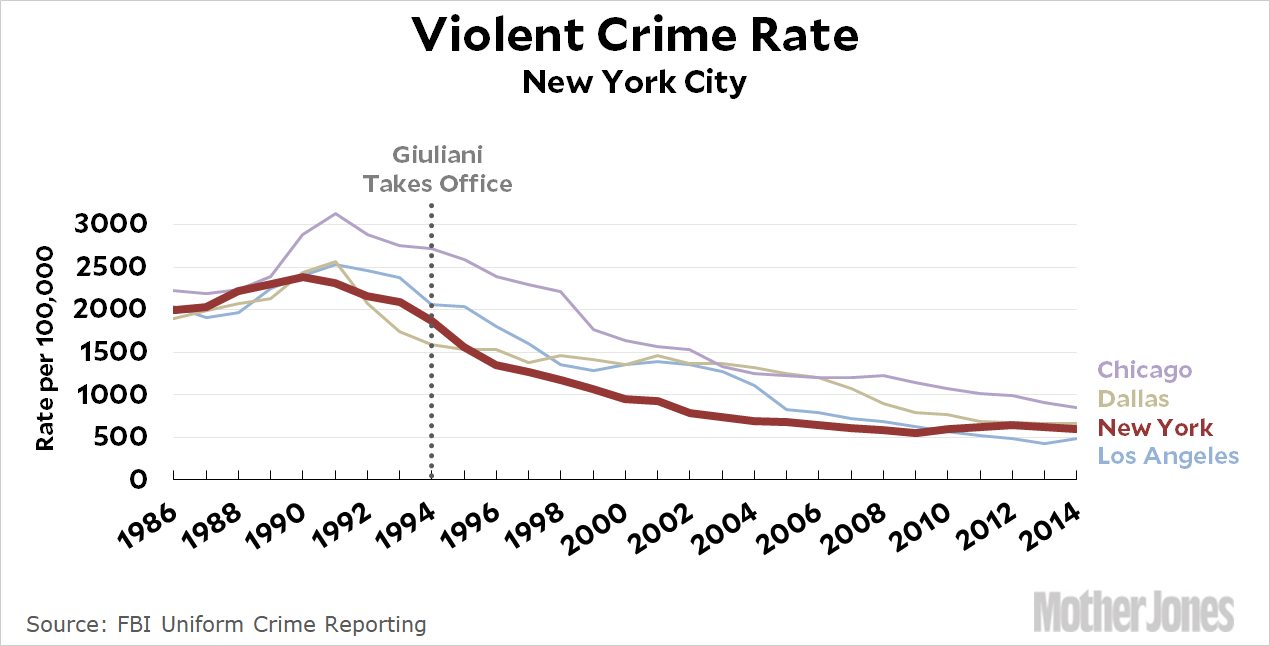David Dinkins was mayor of New York City from 1990 to the end of 1993. His successor, Rudy Giuliani, was credited for turning around New York’s crime problem, but current mayor Bill DeBlasio thinks that’s unfair:
“Dinkins got a raw deal largely because of race,” Mr. de Blasio said in a telephone interview before his re-election. “And he got a raw deal because he was not a loud, showy personality and he wasn’t always trying to claim credit. But any normal assessment of history would say, wait a minute, he added cops, that’s why this turned around.”
“The thing I learned from that is an audacity of how to deal with what appeared to be an intractable problem,” Mr. de Blasio added. “The fact that we’re the safest big city in America today directly links to his actions with getting resources from Albany to get us the size of the police force we needed. None of his predecessors figured out how to do it. I’m not sure his successor, who took a lot of the credit for work done with resources Dinkins got — I’m not sure his successor could have pulled it off in Albany as a political reality.”
Let’s roll the tape:

Unless Rudy Giuliani was a time traveler, he’s not the guy responsible for New York City’s crime decline—and this isn’t just because Dinkins was the guy who put 5,000 more cops on the street. It’s because crime began declining in 1990, when Dinkins took office, and kept declining at roughly the same rate after Giuliani took over.
I don’t doubt that Bill Bratton and CompStat helped. Maybe broken-windows policing helped too. Violent crime in New York has declined more than in many big cities. But these things helped only at the margins.
Giuliani was lucky. He inherited Dinkins’ increase in the police force, and he inherited the effects of the EPA’s phaseout of leaded gasoline. He may have done a good job with the resources he was given, but he’s not the guy who made New York City safe. It’s long past time to acknowledge that.

















